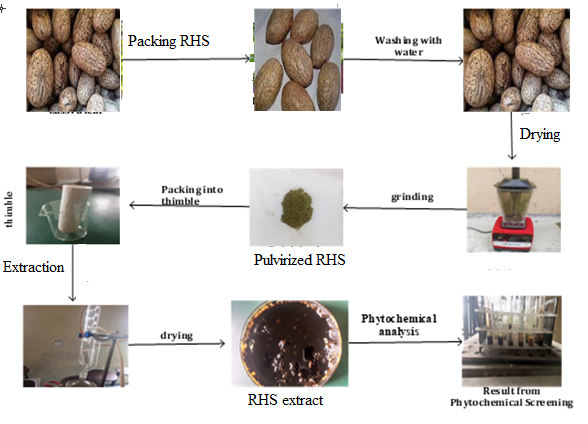Synthesis and Characterization of MnO2 nanoparticles mediated by Raphia hookeri seed
Keywords:
Synthesis, Characterization, Nanoparticles, MnO2, Raphia hookeri seedAbstract
In this study, managanese dioxide nanoparticles (MnO2-NP) was synthesized. Raphia hookeri seed was used as a bioreductant for the synthesis of MnO2-NPs. The biosynthesized MnO2-NPs was investigated for their reaction, structure and morphology. The MnO2-NPs was characterized using the UV-Visible spectrophotometry, Fourier Transform Infrared Spectrophotometry (FTIR), Energy Dispersive Spectrometry (EDX), Powdered X-ray Diffractometry (PXRD), Scanning electron microscpopy (SEM) and Transmission Electron Microscopy (TEM). UV-Visible spectra revealed that MnO2-NPs showed maximum 421nm respectively. FTIR results showed prominent reactive functional groups for hydroxyl (-OH) and carbonyl (-C=O). The EDX results revealed the elemental composition in percentages of the elements in the nanoparticles. PXRD revealled that the manganese dioxide nanoparticle is in a crystaline state. The morphology of the synthesized nanoparticle was found irregular and with porous surface for SEM. The average particle size of the nanoparticles as characterized by TEM was found to be 3.92 nm.

Published
How to Cite
Issue
Section
Copyright (c) 2024 Bamidele H. Akpeji, Bulouebibo Lari, Ufuoma A. Igbuku, Godswill Tesi, Elias E. Elemike, Paul O. Akusu

This work is licensed under a Creative Commons Attribution 4.0 International License.







